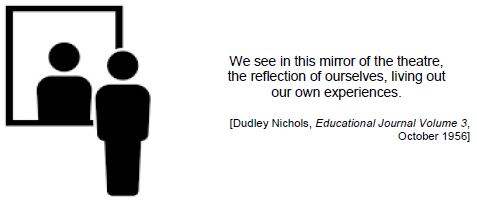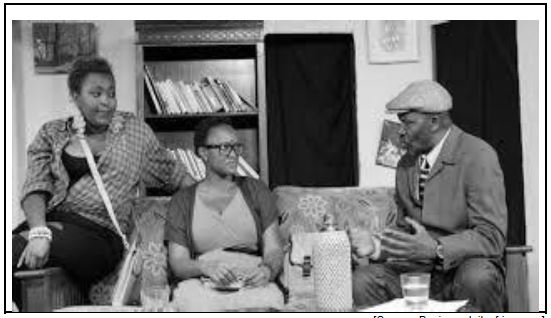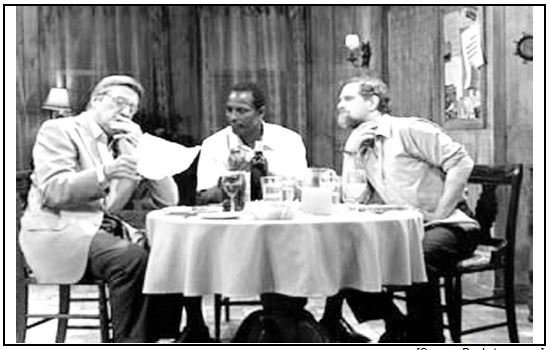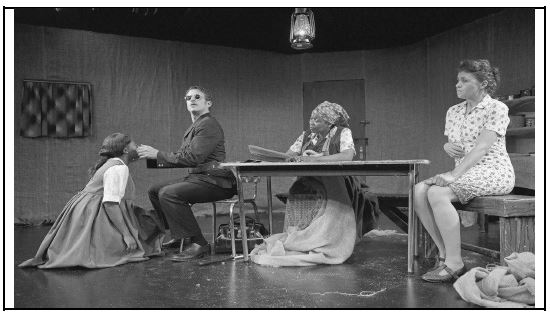DRAMATIC ARTS GRADE 12 QUESTIONS - NSC EXAMS PAST PAPERS AND MEMOS MAY/JUNE 2021
Share via Whatsapp Join our WhatsApp Group Join our Telegram GroupDRAMATIC ARTS
GRADE 12
NATIONAL SENIOR CERTIFICATE EXAMINATIONS
MAY/JUNE 2021
INSTRUCTIONS AND INFORMATION
- This question paper consists of FOUR sections:
SECTION A: 20th Century Theatre Movements (30)
SECTION B: South African Theatre: 1960–1994 (40)
SECTION C: South African Theatre: Post-1994 – Contemporary (40)
SECTION D: The History of Theatre, Practical Concepts, Content and Skills (40) - SECTION A
QUESTION 1 is COMPULSORY.
Refer to the play text you have studied and its relevant 20th Century Theatre Movement.
EPIC THEATRE- Caucasian Chalk Circle Bertolt Brecht
- Kaukasiese Krytsirkel Translation of Bertolt Brecht play text
- Mother Courage Bertolt Brecht
- Moeder Courage Translation of Bertolt Brecht play text
- The Good Person of Szechwan Bertolt Brecht
- Kanna Hy Kô Hystoe Adam Small
OR
THEATRE OF THE ABSURD - Waiting for Godot Samuel Becket
- Afspraak met Godot Translation of Samuel Beckett play text
- Bagasie André P Brink
- The Bald Primadonna Eugene Ionesco
- Die Kaalkop Primadonna Translation of Eugene Ionesco play text
OR
POSTMODERN THEATRE - Skrapnel Willem Anker
- Top Girls Carol Churchill
- Popcorn Ben Elton
- Buried Child Sam Shepard
- SECTION B
This section consists of THREE questions. Answer only ONE question in this section.
QUESTION 2: Woza Albert! Percy Mtwa, Mbongeni Ngema and Barney Simon OR
QUESTION 3: Sophiatown Junction Avenue Theatre Company OR
QUESTION 4: Siener in die Suburbs PG du Plessis - SECTION C
This section consists of THREE questions. Answer only ONE question in this section.
QUESTION 5: Nothing but the Truth John Kani OR
QUESTION 6: Groundswell Ian Bruce OR
QUESTION 7: Missing Reza de Wet - SECTION D
This section is COMPULSORY.
SECTION A: 20th CENTURY THEATRE MOVEMENTS
This question is COMPULSORY.
QUESTION 1
Refer to SOURCE A below and answer the question that follows.
SOURCE A
 |
Discuss, in an essay, to what extent you agree or disagree that the quotation in SOURCE A reflects the 20th Century Theatre Movement and the play text you have studied.
Refer to the following in your essay:
- Characters
- Staging
- Themes
Write the title of the play text and the 20th Century Movement you studied (Theatre of the Absurd OR Epic Theatre OR Postmodern Theatre) at the beginning of your essay.
TOTAL SECTION A: 30
SECTION B: SOUTH AFRICAN THEATRE: 1960–1994
Answer only ONE question in this section.
QUESTION 2: WOZA ALBERT! BY PERCY MTWA, MBONGENI NGEMA AND BARNEY SIMON
Study SOURCE B below and answer the questions that follow.
SOURCE B
| PERCY: There is no jobs! MBONGENI: There is jobs!!! Ten thousand bricks! This morning there were many people at the gates standing there looking for work. And you chased them away! PERCY: Zulu boy, you're getting cheeky, huh? (5) MBONGENI: I'm not getting cheeky. It's true. PERCY: Ja! I'm cutting down your salary. I think you're getting too much. Ja! Ja! MBONGENI : The boss can't cut salary. PERCY: Ek gaan dit doen! (I'm going to do it.) (10) MBONGENI: That's not showing sympathy for another man. The cost of living is too high. There's too much inflation. PERCY: Zulu boy! Zulu boy! You sit around waiting for Morena and then you come and tell me about the cost of living? You talk about inflation? What do you know about inflation? I've got you here, just here. One more mistake, one more cheeky, and you're fired! (15) |
2.1 Briefly describe the context which inspired the creation of Woza Albert! (2)
2.2 Identify the character Percy is playing in this scene. (1)
2.3 Explain the injustices shown by the words and attitude of Percy towards Mbongeni in line 5 and line 7. (4)
2.4 Highlight the socio-economic conditions (problems) reflected in SOURCE B. (4)
2.5 Suggest how you might physically place the characters, Percy and Mbongeni, in SOURCE B on stage for the scene to be effective. (3)
2.6 Assess whether or not the role of Morena (line 13) is important to the themes and messages of the play, although he only appears on stage in the final scene. (6)
2.7
| A play is not just words on a page. It is a living, breathing world created on the stage. |
2.7.1 Discuss the process of workshopping a play and how this process can create a 'living, breathing world … on stage'. (8)
2.7.2 Imagine that you are a director. Explain how you might stage any scene of the play as a 'living, breathing world on the stage' by discussing the use of the following aspects of the performance/ theatrical elements:
- Set
- Sound effects
- Characterisation
(12)
[40]
QUESTION 3: SOPHIATOWN BY THE JUNCTION AVENUE THEATRE COMPANY
Study SOURCE C below and answer the questions that follow.
SOURCE C
I'm telling you. I walk into the Ritz – me and my boys. We open the doors – swing doors. Wam! Wam! And everybody's dancing. I stand for a moment. Very quiet. Just like Styles. I survey the scene from under my hat. And then – Ladies and Gentlemen, Mataras and Majietas, Dames en Here – the music is still playing – Blue Moon – but nobody's dancing. They're all looking at me. I say, 'Ladies this side, Gents that side.' They're all up against the walls. And I walk to the gents, 'Ouens, steek julle hande uit.' And all the left hands shoot out, zip! All the rappe. And as I walk I thank each of them as I go by. 5
10 |
3.1 Briefly describe the context that inspired the creation of Sophiatown. (2)
3.2 Identify the character who is speaking in SOURCE C. (1)
3.3 Explain how the character's actions, words and attitude reflect the life of a a gangster. (4)
3.4 Highlight the socio-economic conditions reflected in SOURCE C. (4)
3.5 Suggest how you might physically block the scene in SOURCE C for it to be effective. (3)
3.6 Assess how the character identified in QUESTION 3.2 contributes to the mood and energy of the scene in SOURCE C. Do NOT repeat information given in QUESTION 3.5. (6)
3.7 A play is not just words on a page. It is a living, breathing world created on the stage.
3.7.1 Discuss the process of workshopping a play and how this process can create 'a living, breathing world … on stage'. (8)
3.7.2 Imagine that you are a director. Explain how you might stage any scene of the play as a 'living, breathing world on the stage' by discussing the use of the following aspects of the performance/ theatrical elements:
- Set
- Sound effects
- Characterisation
(12)
[40]
QUESTION 4: SIENER IN DIE SUBURBS BY PG DU PLESSIS
Study SOURCE D below and answer the questions that follow.
SOURCE D
| Dis nie van Ma wat ek wou weg nie … dis van die plek af. (Stemmingsverandering: dringend). Ma, ek kan nie met Jakes trou nie. Ek wil nie hier bly nie. Ek wil nie hierdie lewe hê nie, ook nie die mans nie, Ma. Ek wil nie 'n man hê wat getrek huis toe kom nie … as hy huis toe kom … met dwarsklappe en kleintjies nie. (pouse) … Ek wil nie oudgebaar wees op dertig nie. (Pouse, stemmingsverandering). Weet Ma, hulle weet nie van ons nie … by die werk, hulle dink ons bestaan nie … hulle lag as hulle van ons hoor, of as hulle hoor waar ek bly, weet hulle nie waar om te kyk nie. Ons maak hulle verleë oor ons – oor ons. Hulle weet nie van ons nie. Hulle weet nie dat ons leef en wat ons voel nie. Hulle weet nie (dringend). Ek wil van geweet wees, Ma, ek wil nie vrek soos 'n hond nie, ek wil van geweet wees … (nadenkend). Ek wou so graag van geweet wees. |
4.1 Briefly discuss the context that might have inspired PG du Plessis to write Siener in die Suburbs. (2)
4.2 Identify the character who is speaking in SOURCE D. (1)
4.3 Explain how the character's actions, words and attitude reflect the life of someone living in the suburbs. (4)
4.4 Highlight the socio-economic conditions reflected in SOURCE D. (4)
4.5 Suggest how you might physically block the scene in SOURCE C for it to be effective. (3)
4.6 Assess the impact of the character in SOURCE D in creating dramatic tension in the play. (6)
4.7 A play is not just words on a page. It is a living, breathing world created on the stage.
4.7.1 Discuss the process of workshopping a play and how this process can create a 'living, breathing world created on stage'. (8)
4.7.2 Imagine that you are a director. Explain how you might stage any scene of the play as a 'living, breathing world … on the stage' by discussing the use of the following aspects of the performance/ theatrical elements:
- Set
- Sound effects
- Characterisation
(12)
[40]
TOTAL SECTION B: 40
SECTION C: SOUTH AFRICAN THEATRE: POST-1994 – CONTEMPORARY
Answer only ONE question in this section.
QUESTION 5: NOTHING BUT THE TRUTH BY JOHN KANI
Study SOURCE E below and answer the questions that follow.
SOURCE E
5.1 Identify the characters from stage left to stage right. (3)
5.2 Select a character and write a brief description of him or her. (3)
5.3 Examine the body language in SOURCE E and explain what it suggests about the relationship between the characters. (3)
5.4 Refer to your answer to QUESTION 5.2. Analyse the role of this character in developing the dramatic tension in the play. (6)
5.5 Describe the effectiveness of using a box set for the staging of this play. (3)
5.6 The set is an environment for the action.
Comment on the appropriateness of the statement above in relation to SOURCE E. (6)
5.7 Explain THREE techniques from Stanislavski's system/method to show how an actor might use each technique to create a truthful and realistic character. (6)
5.8
| Although realistic plays are set within a specific socio-political background, the plays have relevance for anyone, anywhere, anytime. |
Evaluate this statement with reference to the socio-political background, themes and messages of Nothing But The Truth.
(10)
[40]
QUESTION 6: GROUNDSWELL BY IAN BRUCE
Study SOURCE F below and answer the questions that follow.
SOURCE F
6.1 Identify the characters from stage left to stage right (3)
6.2 Select a character and write a brief description of him. (3)
6.3 Examine the body language in SOURCE F and explain what it suggests about the relationship between the characters. (3)
6.4 Refer to your answer to QUESTION 6.2. Analyse the role of this character in developing the dramatic tension in the play. (6)
6.5 Describe the effectiveness of using a box set for the staging of this play. (3)
6.6 The set is an environment for the action.
Comment on the appropriateness of the statement above in relation to SOURCE F. (6)
6.7 Explain THREE techniques from Stanislavski's system/method to show how an actor might use each technique to create a truthful and realistic character. (6)
6.8 Although realistic plays are set within a specific socio-political background, the plays have relevance for anyone, anywhere, anytime.
Evaluate this statement with reference to the socio-political background, themes and messages of Groundswell. (10)
[40]
QUESTION 7: MISSING BY REZA DE WET
Study SOURCE G below and answer the questions that follow.
7.1 Identify the seated characters from stage left to stage right. (3)
7.2 Select a character and write a brief description of him or her. (3)
7.3 Examine the body language in SOURCE G and explain what it suggests about the relationship between the characters. (3)
7.4 Refer to your answer to QUESTION 7.2. Analyse the role of this character in developing the dramatic tension in the play through the offstage character.
(6)
7.5 Describe the effectiveness of using a box set for the staging of this play. (3)
7.6 The set is an environment for the action.
Comment on the appropriateness of the statement above in relation to SOURCE G. (6)
7.7 Explain THREE techniques from Stanislavski's system/method to show how an actor might use each technique to create a truthful and realistic character.
(6)
7.8
| Although realistic plays are set within a specific socio-political background, the plays have relevance for anyone, anywhere, anytime. |
Evaluate this statement with reference to the socio-political background, themes and messages of Missing. (10)
[40]
TOTAL SECTION C: 40
SECTION D: THE HISTORY OF THEATRE, PRACTICAL CONCEPTS, CONTENT AND SKILLS
This question is COMPULSORY.
QUESTION 8
Study SOURCE H below and answer the questions that follow.
SOURCE H
In challenging times, drama and theatre can help us escape reality for a while, make us laugh, entertain us, educate us and even uplift us. This is certainly true for South Africa today. |
8.1 Suggest how drama and theatre can help one 'escape reality for a while' (SOURCE H). (4)
8.2 Reflect on the different ways in which your experience of Dramatic Arts might have been affected by lockdown while learning at home. (6)
8.3 Suggest performance alternatives which theatre companies might have put in place to make up for the loss of income when theatres were closed. (4)
8.4 You have been asked to create an educational theatre production about any current social issue using Grotowski's principles of Poor Theatre.
Social issues may include the following: Corona virus, poverty, HIV/Aids, gender-based violence, human trafficking, etc.
8.4.1 Identify the social issue and your target audience. (2)
8.4.2Motivate the aim and message of your production.(4)
8.4.3 Explain how you would address the actor-audience relationship using Grotowski's principles of Poor Theatre. (8)
8.4.4 Identify and explain the use of ONE prop in your production. (2)
8.5 Discuss the Dramatic Arts skills you have developed in the preparation of your adapted theme/audition programme for your final examination.
Refer to the following:
- Vocal skills
- Physical skills
- Acting skills
(10)
[40]
TOTAL SECTION D: 40
GRAND TOTAL: 150


